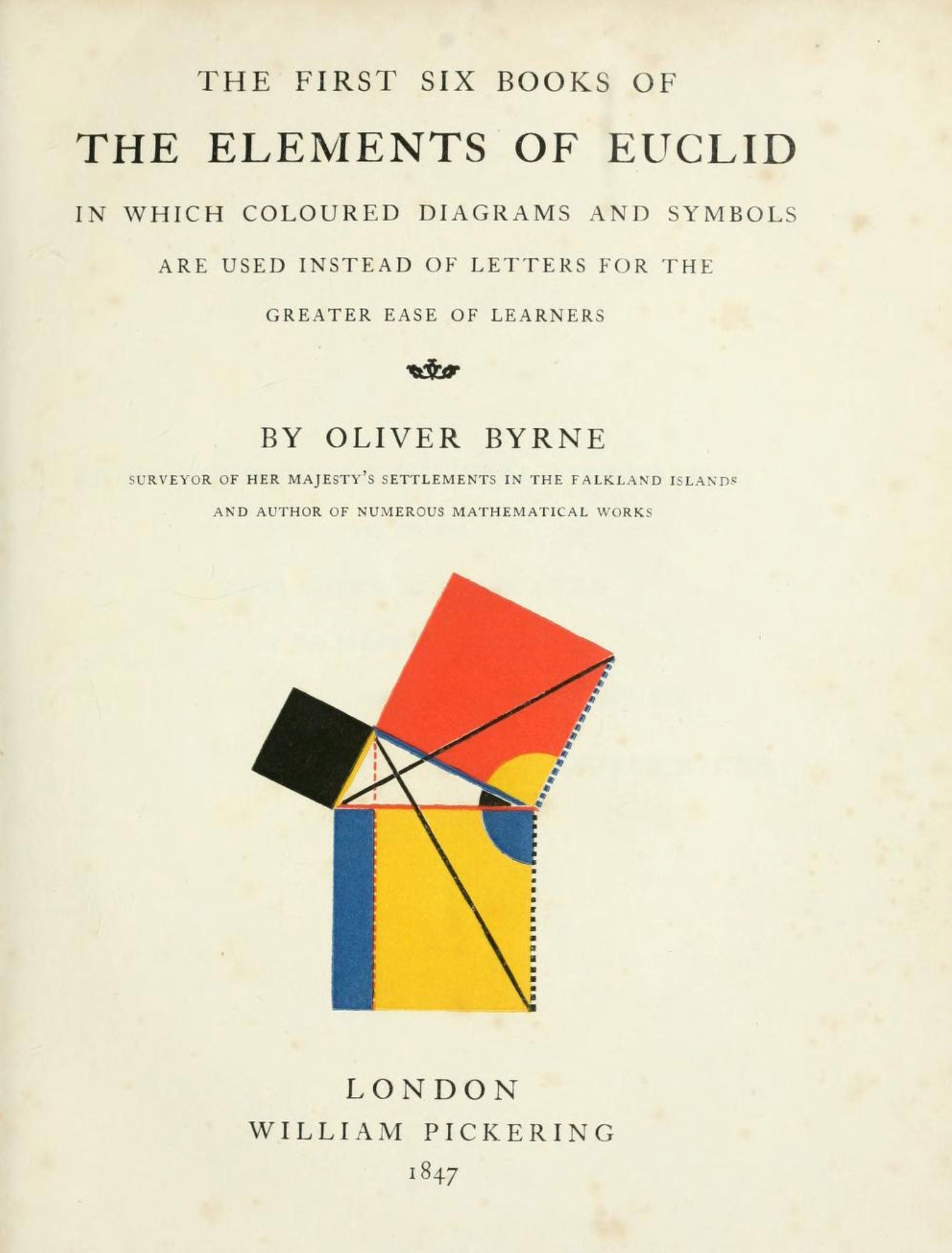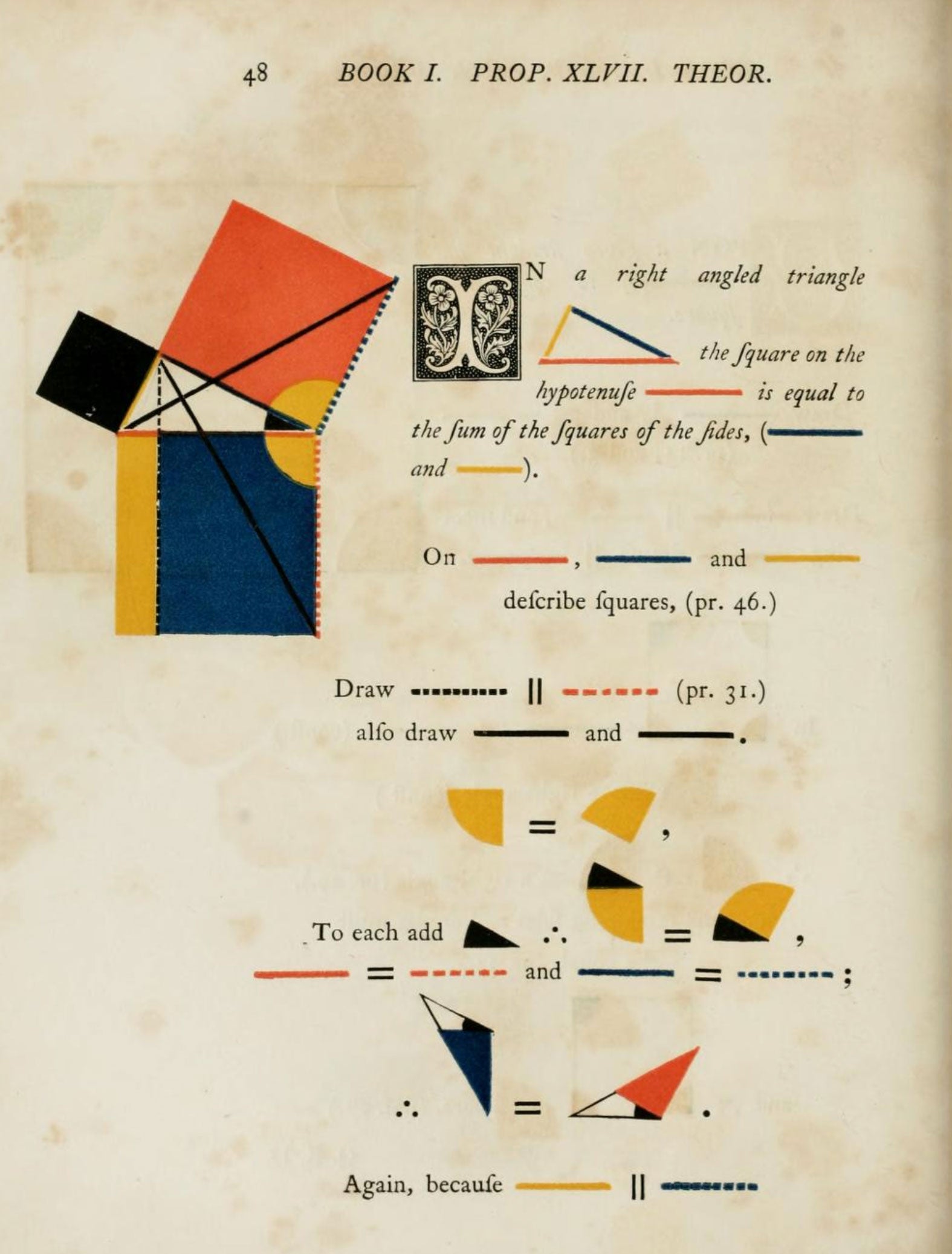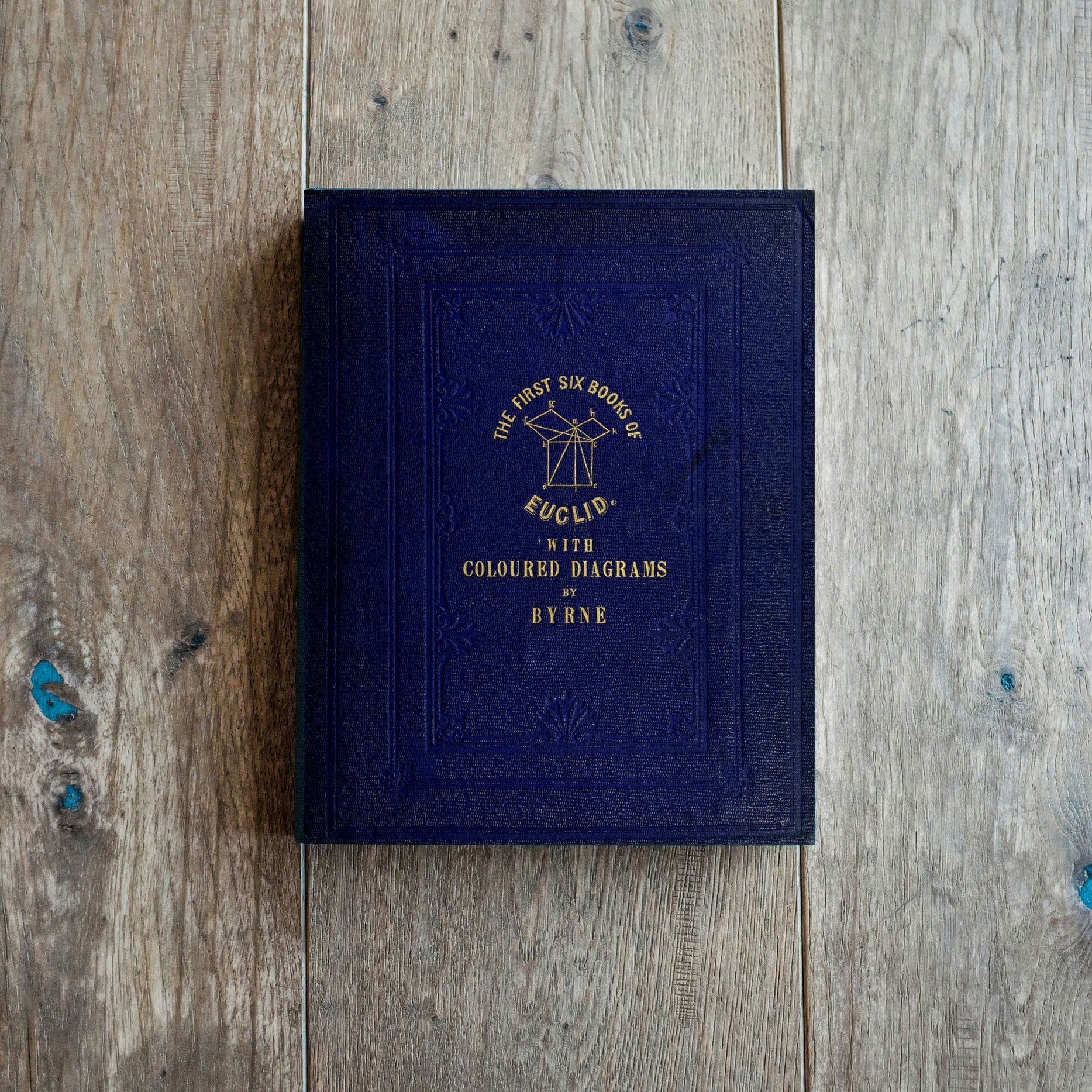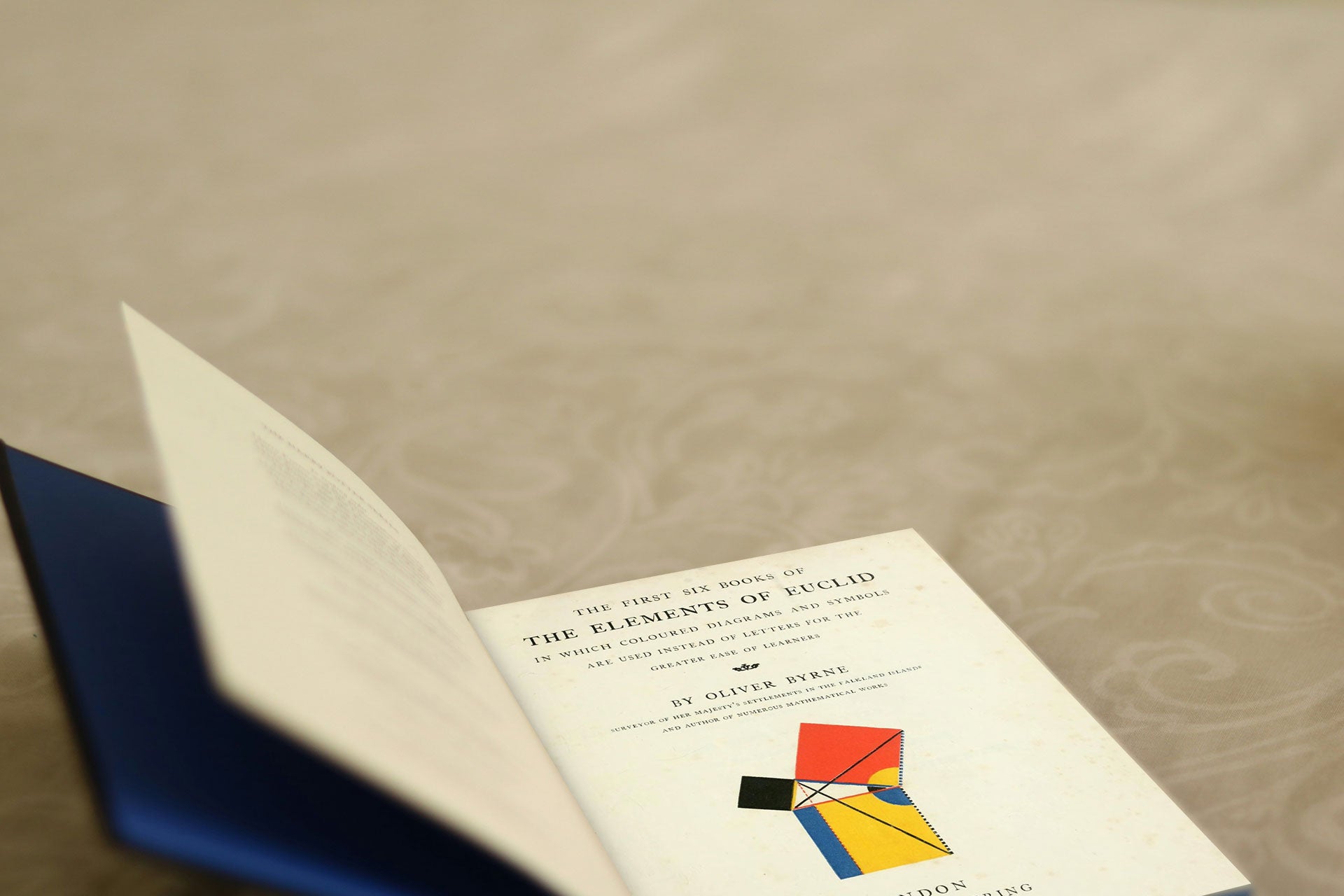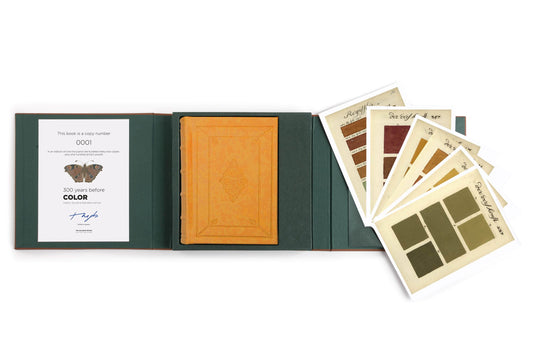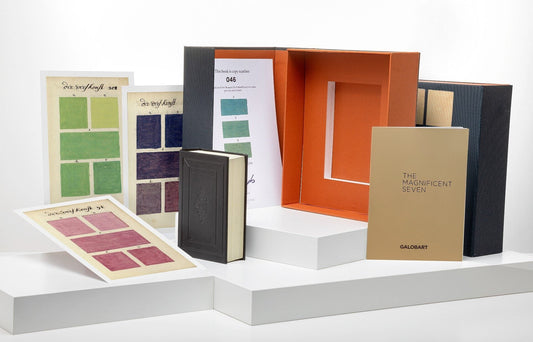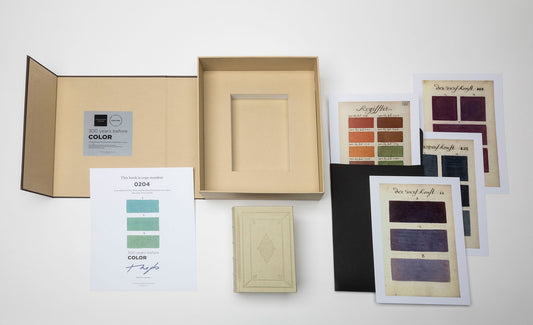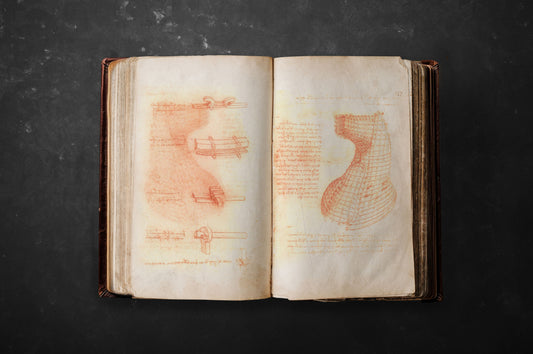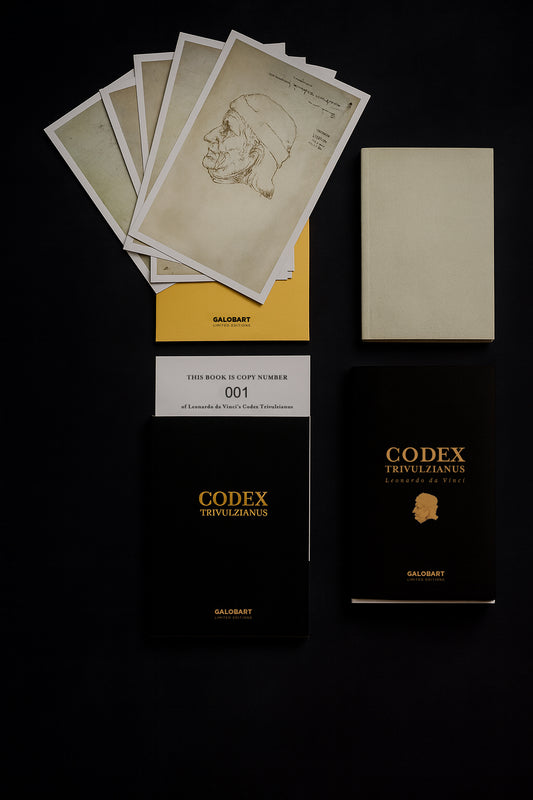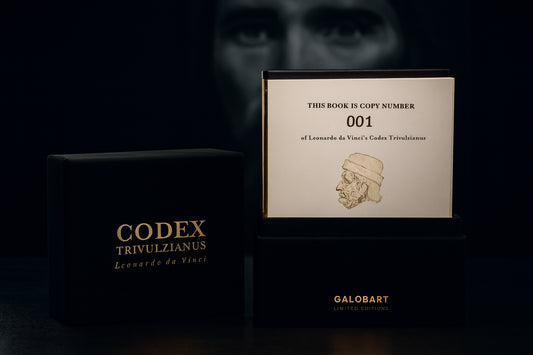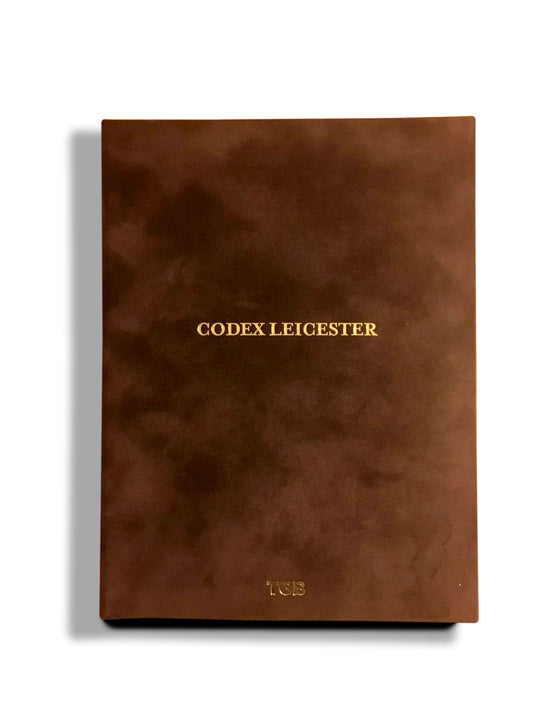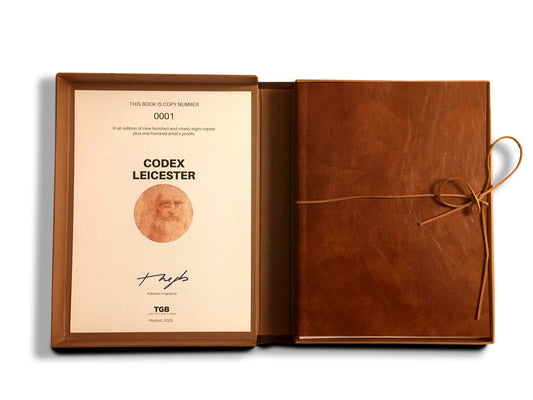Byrne's Euclid
Deluxe facsimile edition of Oliver Byrne's Elements of Euclid, 1847.
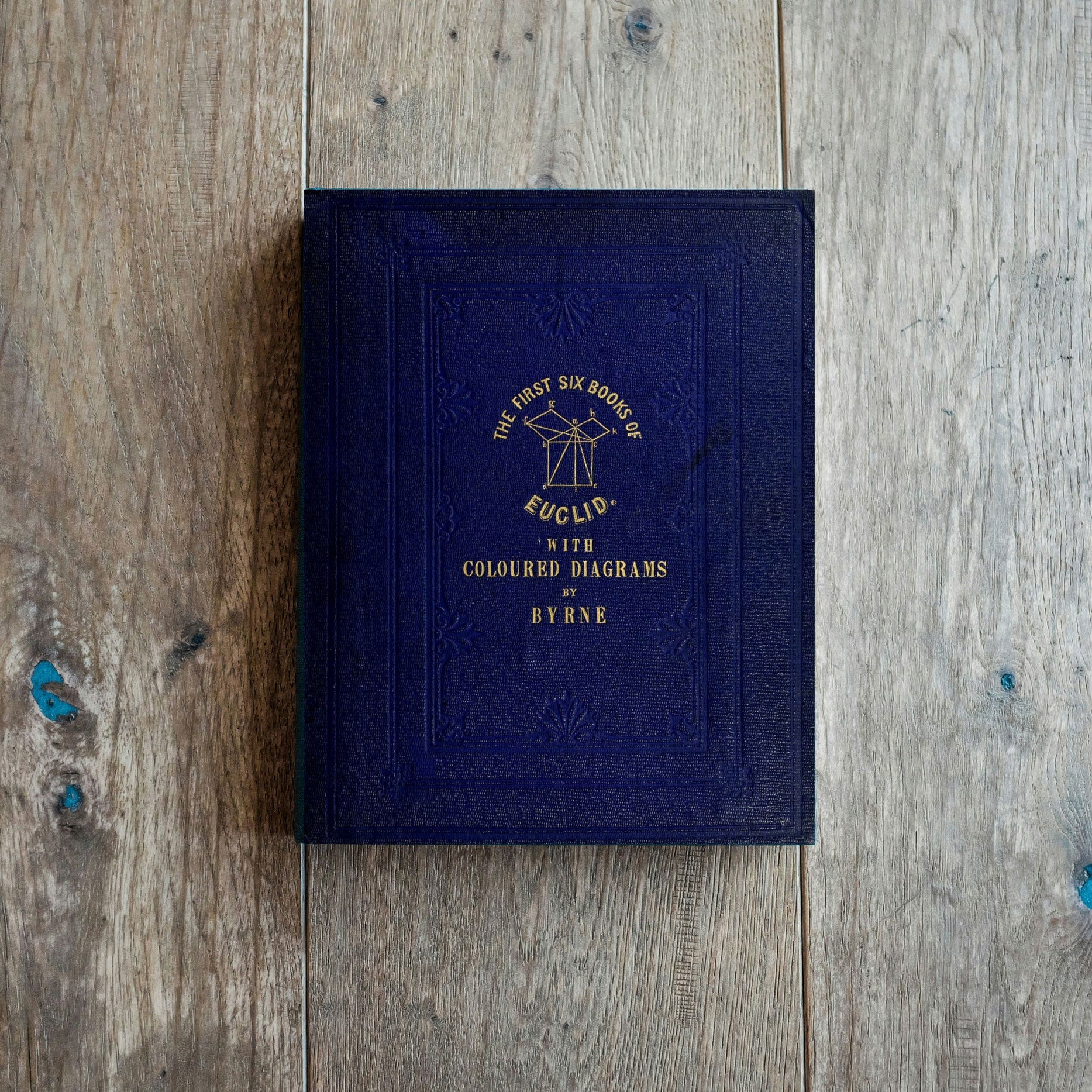


Byrne's Euclid
Byrne's Euclid
Deluxe facsimile edition of Oliver Byrne's Elements of Euclid, 1847.
Couldn't load pickup availability
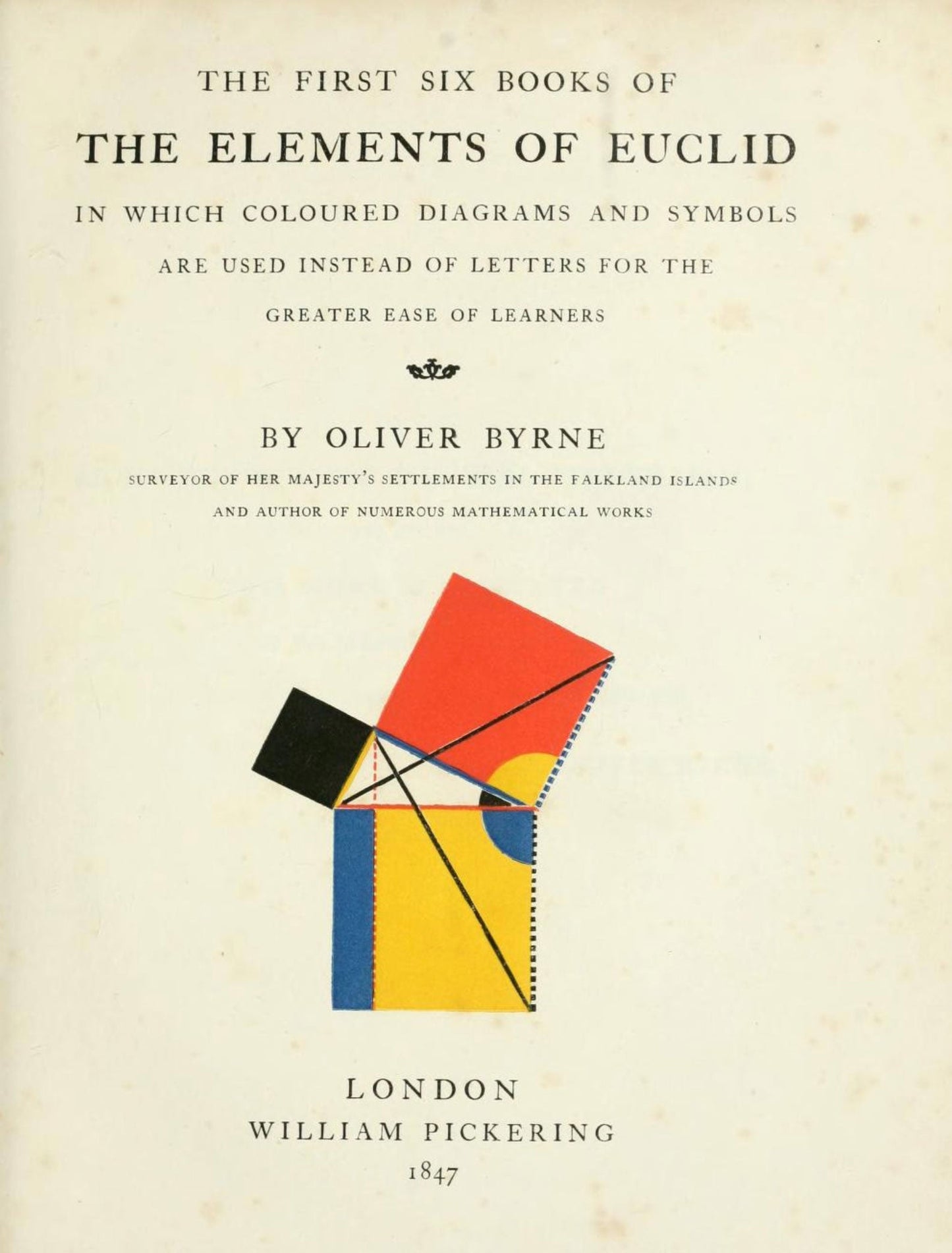

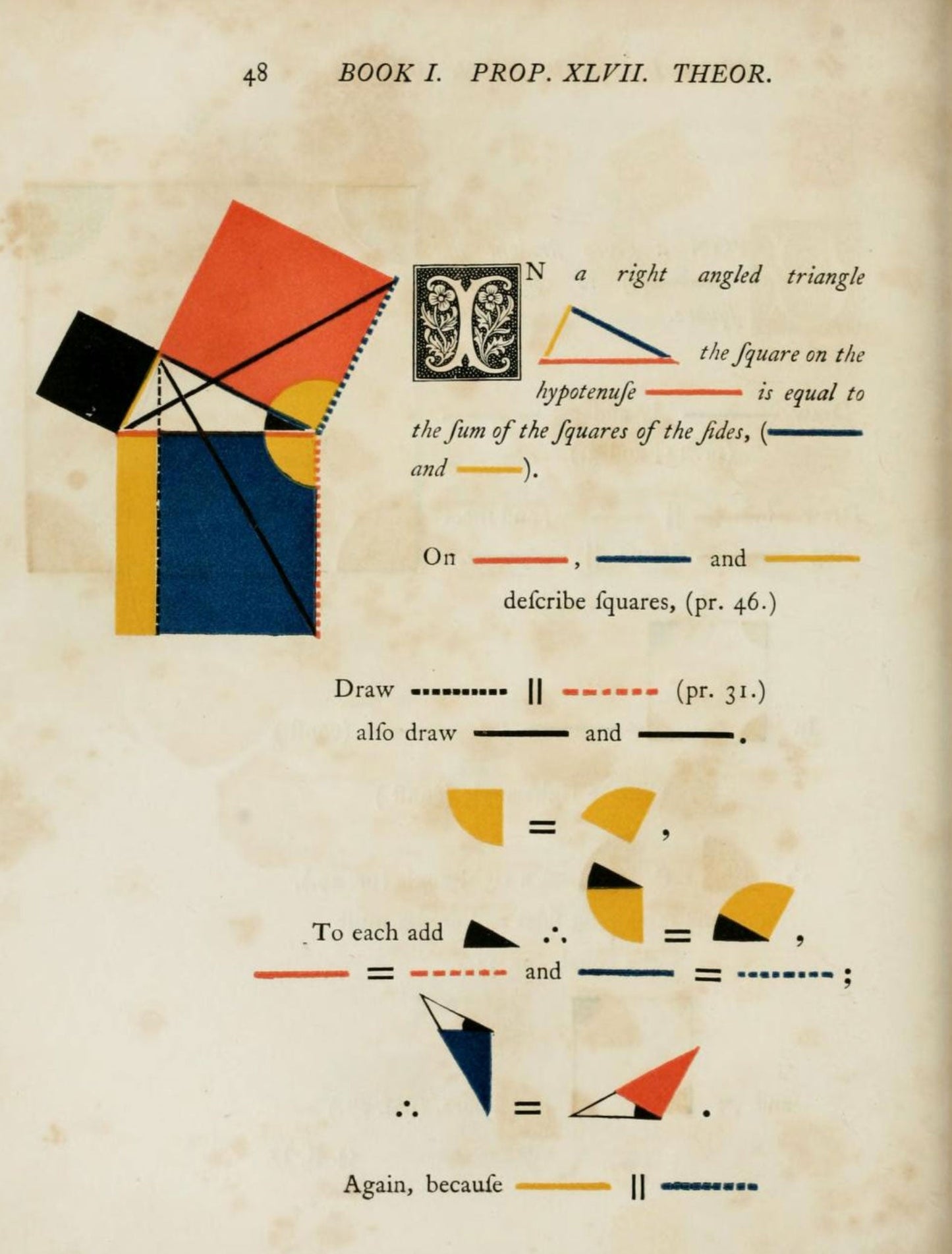
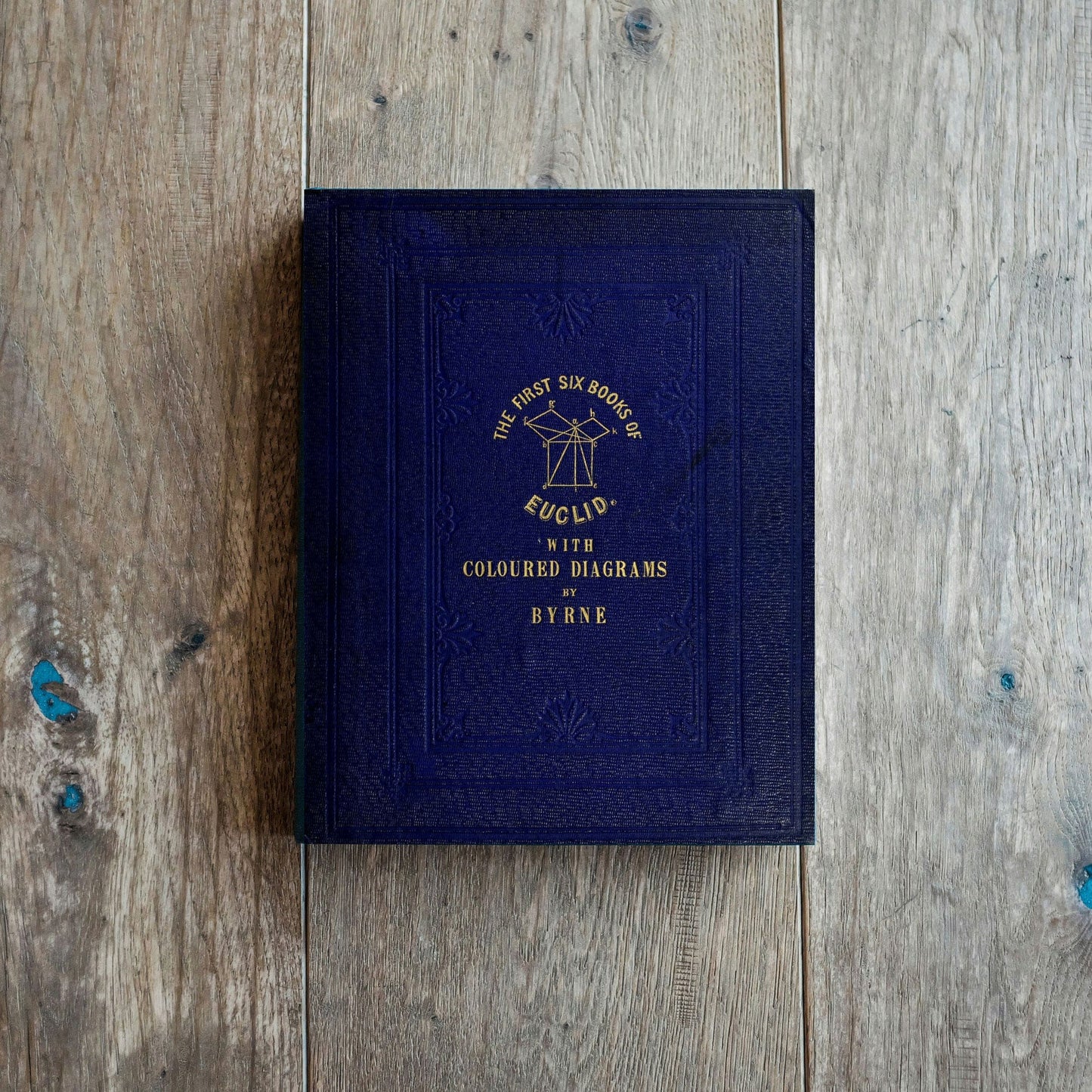
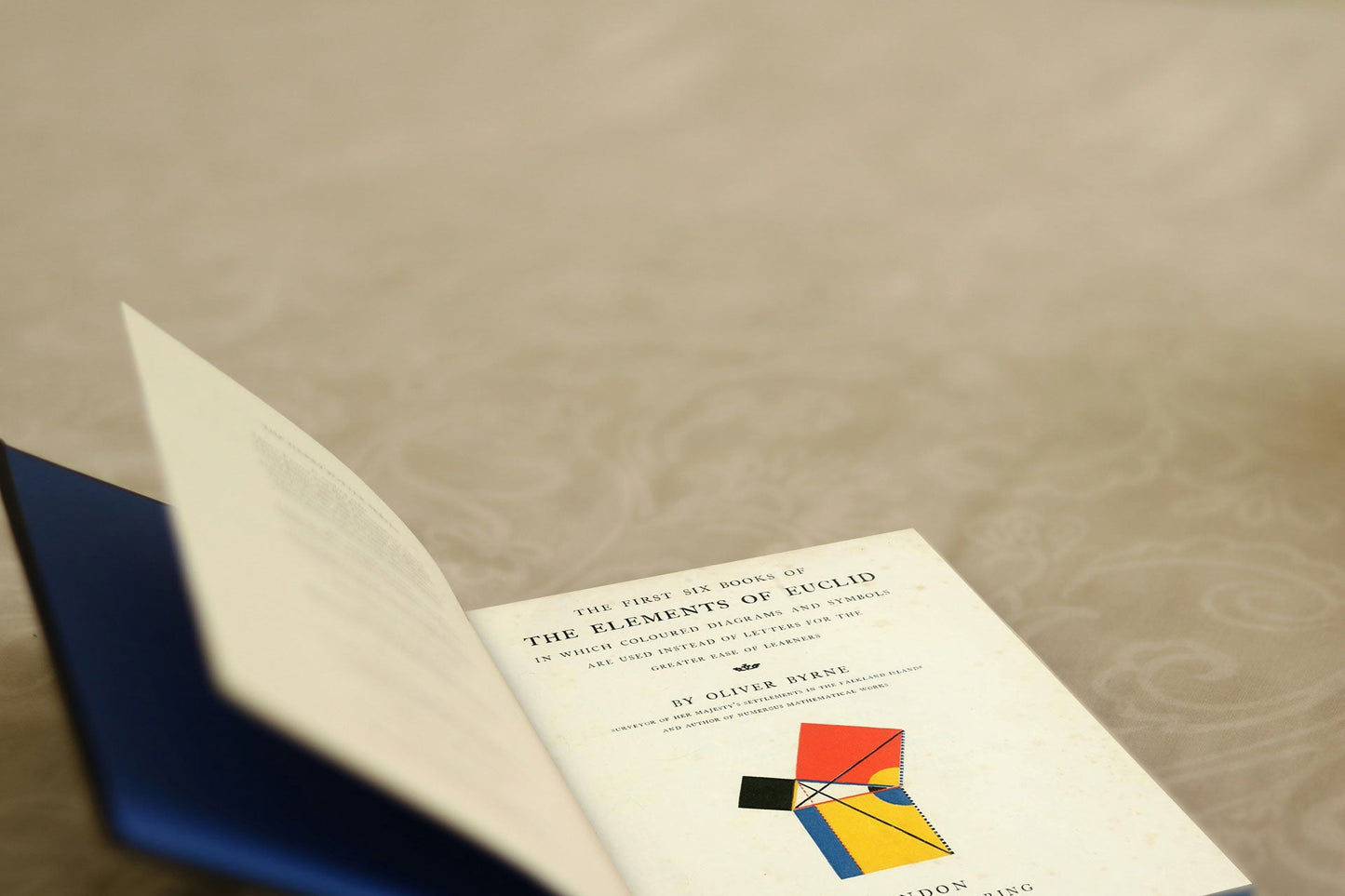
Byrne's Euclid
Luxury limited edition of 998 copies, numbered and signed.
*Facsimile book that reproduces the original.
*Hand-bound in vegan leather, reproducing the original cover.
*Also includes 5 limited edition art prints for collecting or framing.
*Numbered certificate of the edition, printed on natural parchment.
*And a book with texts in Spanish by renowned artists from the art world, graphic designers, mathematicians...
TOMORROW €130 | AFTER €180
Pre-order. 16-18 weeks from receipt of order.



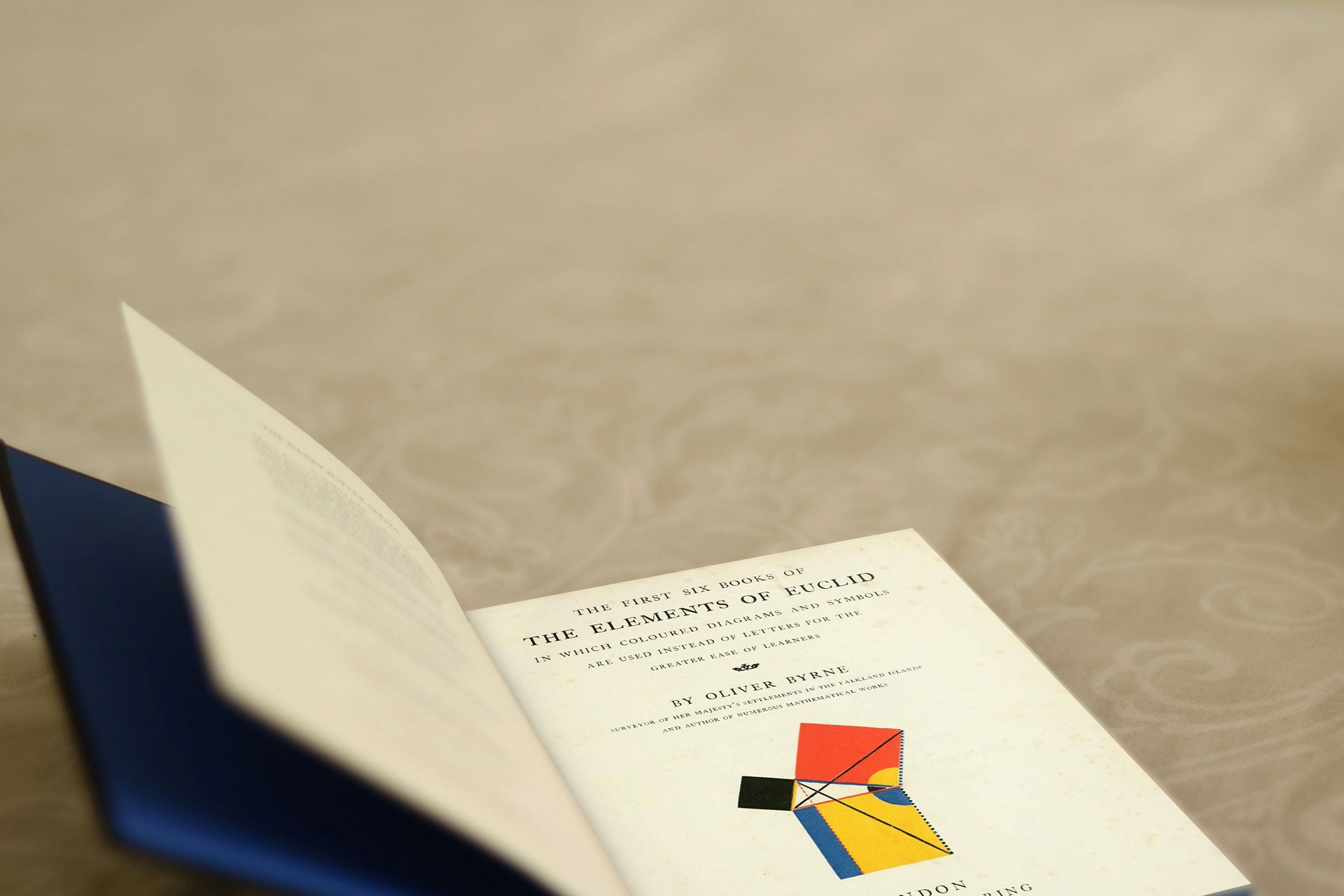
Byrne's Euclid
Considered one of the most beautiful books of the 19th century, this extraordinary facsimile is a must-have for any book collector and graphic design enthusiast. And if you're also passionate about mathematics, the Bauhaus, and Mondrian, this work is a unique gem not to be missed.
Euclid’s Elements was a collection of 13 books on geometry originally written around 300 BC. Shortly after the invention of the printing press, many editions and translations were created over the centuries. Byrne’s 1847 edition of the first six books is notable for its unique use of colorful illustrations to demonstrate proofs rather than using letters to label angles, edges, and shapes. His edition was one of the first books to be published with such detailed use of color and, combined with its detailed diagrams, constitutes an impressive publishing achievement for its time and continues to stand out today as a work of art.
Euclid's Elements has been considered the most successful and influential textbook ever written. It was one of the first mathematical works to be printed after the invention of the printing press, and is estimated to be, after the Bible, the second most widely published work since its first printing in 1482, with over a thousand editions. For centuries, when the Quadrivium was included in the curriculum of all university students, knowledge of at least part of Euclid's Elements was required.
"Byrne's Euclid" refers to a unique and innovative edition of the first six books of Euclid's Elements, a classic work of geometry, created by mathematician and engineer Oliver Byrne. This edition, published in 1847 by William Pickering, is notable for its distinctive approach to presenting geometric principles.
What distinguishes "Byrne's Euclid" is its use of colorful and visually striking diagrams to represent geometric concepts. Each geometric figure and theorem is represented using multiple colors, making complex ideas more accessible and visually appealing. The color-coded illustrations serve as a visual aid to enhance understanding, providing a different and engaging perspective on Euclidean geometry.
The choice of colors in Byrne's "Euclid" is not arbitrary; instead, it follows a systematic and consistent pattern. Different colors represent different elements, lines, or angles, creating a visual language that aids in understanding the relationships between geometric entities. Byrne aimed to make the often abstract and intricate principles of Euclidean geometry more understandable to a wider audience, including students and enthusiasts. The use of color and visual elements in his edition was a departure from traditional black and white geometric illustrations and foreshadowed some of the principles later adopted by modernist design movements such as the Bauhaus and De Stijl.
This work is recognized for its innovative approach and historical importance in both mathematics and graphic design. The book serves as a fascinating example of how visual representation can play a crucial role in conveying complex mathematical concepts.

The author
Oliver Byrne (1810–1880) was a mathematician and engineer known for his innovative teaching work, especially his version of the first six books of Euclid's Elements. Published by William Pickering in 1847, this work used colorful graphic explanations to represent each geometric principle, making it unique and revolutionary for its time.
The book has experienced renewed interest in recent years due to its innovative graphic design and style, which foreshadowed the modernist experiments of movements such as the Bauhaus and De Stijl. Edward Tufte, a writer on information design, references the book in his work on graphic design, and McLean mentions it in his 1963 book on Victorian book design.
Byrne called himself a mathematician, civil engineer, military engineer, and mechanical engineer.
The Library of Congress has a steel-engraved portrait of Oliver Byrne, suggesting the recognition and importance accorded him in his time.
Diagrams
Byrne's Euclid is known for her colorful and visually striking diagrams that accompany the geometric principles in Euclid's Elements. These diagrams, designed by Oliver Byrne, stand out for their innovative approach to visually representing geometric concepts. Some key features of the diagrams are:
Use of Colors: They use colors distinctively. Each color is assigned to a specific geometric element, such as lines, angles, or areas, creating a coded visual presentation.
Simplicity and Clarity: They are designed to be simple and clear, eliminating unnecessary elements and highlighting essential geometric relationships. This simplicity is intended to facilitate understanding of the principles presented.
Artistic Style: In addition to their educational function, the diagrams also have an aesthetic component. The combination of colors and shapes follows an artistic style that foreshadows the modernist tendencies of movements such as Bauhaus and De Stijl.
Visualization of Geometric Operations: They illustrate geometric operations graphically and often represent the evolution of figures as Euclidean principles are applied.
Focus on Visual Education: Byrne aimed to make the abstract principles of geometry more accessible, and diagrams play a key role in this endeavor. The use of colors and shapes facilitates visual understanding of the concepts.
For a complete understanding of the specific diagrams in Byrne's "Euclid," we recommend reviewing our edition directly. The combination of text and diagrams provides a unique and visually rich educational experience, making geometric principles more engaging and understandable.
Initials
In Byrne's Euclid, the beautiful initials were originally designed by Mary Byfield. These initials are decorative and ornate letters used at the beginning of sections or chapters to embellish and add an aesthetic touch to the book's design. Mary Byfield, a prominent Victorian illustrator and engraver, was commissioned to create these decorative initials for the 1847 edition of Oliver Byrne's Euclid.
Initials are known for their detail and artistic style. Each initial is decorated with ornamental motifs that reflect the aesthetic sensibility of the period. These decorative elements were common in Victorian-era books and were used to enhance the visual presentation of the work.
Mary Byfield's work on the initials for "Byrne's Euclid" contributed to the edition's overall unique and artistic appearance. These types of decorative details were valued not only for their aesthetic function but also for the artistic endeavor they represented, adding a touch of elegance to the book's overall design.
Typography
Byrne's edition uses the Caslon typeface.

Curiosities:
According to Julie L. Mellby, graphic arts librarian at Princeton University , Byrne's Euclid was exhibited in London at the Great Exhibition of 1851. Its beauty and printing skill were praised, which might have influenced future publications and artwork. However, the book sold at an extravagant price by contemporary standards, placing it out of reach of the educators who were supposed to be using this new way of teaching geometry. Given the royal seal in the upper right corner of the cover stating "Specimen: Department of Science and Art," the second author suspects that their copy of Byrne's Euclid may have been a sample copy at the Great Exhibition.
In an article from the Mathematical Association of America (MMA), it is stated:
"Today, due to its rarity and beauty, Byrne's 1847 "Euclid" is an extremely valuable book, selling for an extravagant price by modern standards. At the time of this writing, if a copy could be found in similar condition to the second author's rare book collection, it could fetch as much as $22,500."
The same article states:
"Byrne's First Six Books of Euclid's Elements, in which colored diagrams and symbols are used instead of letters for the greater convenience of students, were designed and printed by the acclaimed printer Charles Whittingham (1795-1876) of the Chiswick Press. His use of color was his most striking feature, with like angles, lines, or polygonal regions assigned the same bright primary color, and his colored shapes must surely have presented the greatest challenge to the printer. However, his more traditional black printing was intricate and beautiful. Each proposition was presented in black Caslon italic, with a beautifully incised leading vignette of four lines, usually an "I" for "If" or "In" (see Figure 15). Thus, a leading four-line vignette begins most pages in "Byrne's Euclid." Caslon is a group of beautiful serif typefaces designed by William Caslon (1692-1766). According to the Society of Printers, "it was at the Chiswick Press that the use of the old Caslon type was revived in 1843. . . [A] revival followed by printers throughout England."110 At least three women assisted Whittingham: his daughters Charlotte and Elizabeth Whittingham studied art and calligraphy, and Mary Byfield turned his designs into beautiful woodcuts and made other contributions to the business as well."
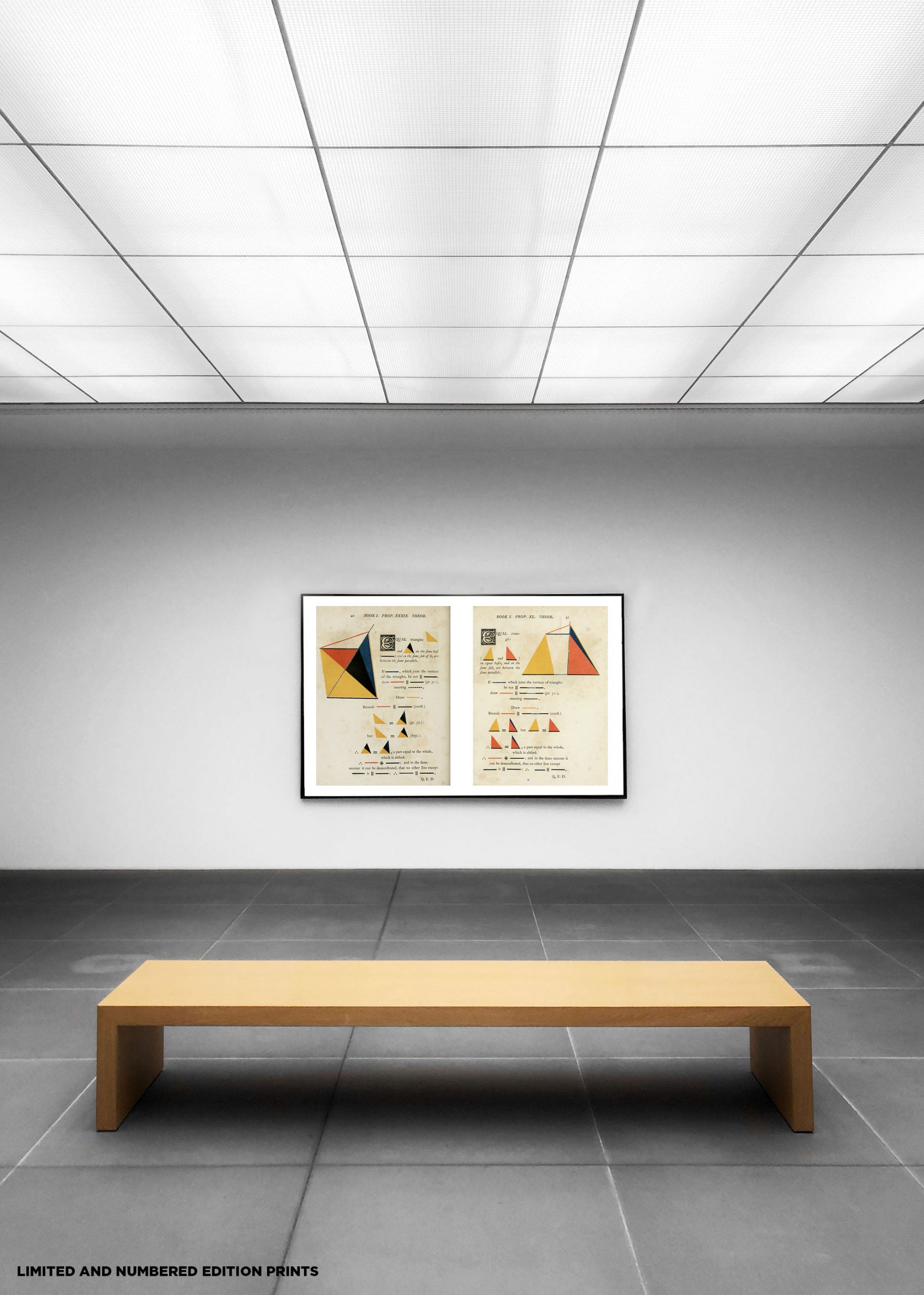



CONTACT US WITH ANY QUESTIONS YOU HAVE
Others love it too...
-
300 YEARS BEFORE COLOR Velvet Royal Blue Edition. NEW.
Regular price €130,00Regular priceUnit price / per -
300 YEARS BEFORE COLOR Deluxe Edition
Regular price €220,00Regular priceUnit price / per -
300 YEARS BEFORE COLOR Black & Gold Edition
Regular price €220,00Regular priceUnit price / per -
300 YEARS BEFORE COLOR Brown & Ivory Edition
Regular price €220,00Regular priceUnit price / per -
Byrne's Euclid
Regular price €125,00Regular priceUnit price / per -
Codex Madrid I and II (Leonardo da Vinci)
Regular price €600,00Regular priceUnit price / per -
Codex Trivulziano
Regular price €140,00Regular priceUnit price / per -
Codex Leicester (Leonardo Da Vinci)
Regular price €170,00Regular priceUnit price / per


